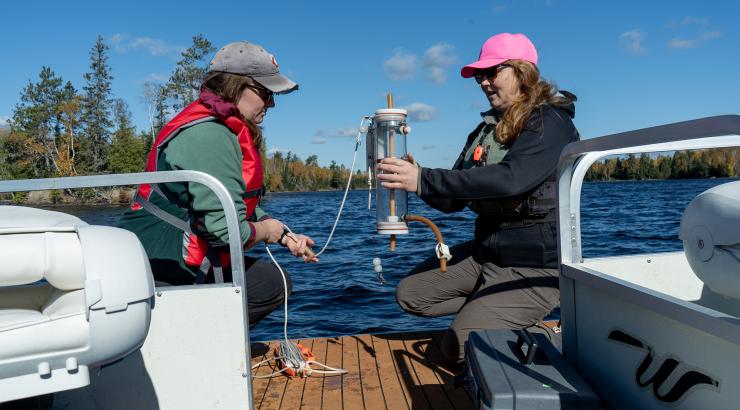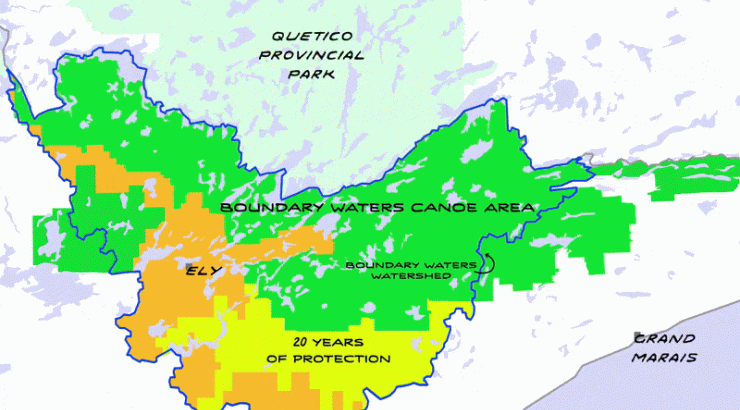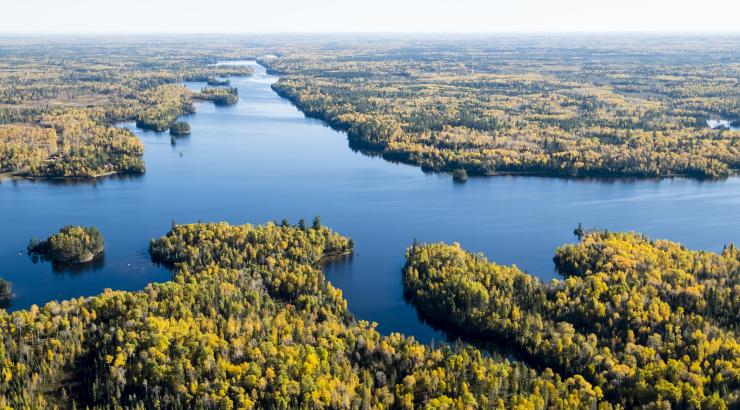By now, you’ve no doubt heard that Twin Metals proposes to build a massive underground mine on the edge of the Boundary Waters Canoe Area Wilderness and upstream from Voyageurs National Park. Minnesota Public Radio described the resulting operation as a “vast underground city.” Though used to downplay concerns about the impact of the mining activity, the underground design still leaves plenty of pathways for significant negative environmental impact. Putting aside the fact that Twin Metals’ own Pre-Feasibility Statement states that the Maturi Southwest deposit “will likely be mined to the surface at some point in the future” (see PFS [PDF], page 14-30), it is crucial to understand the multitude of ways an underground mine will still impact the surface.
Two months ago, we detailed the toxic leaks, seeps and spills that are likely to occur. These byproducts result from surface waste storage ponds; the tailings storage facility slated to hold 234 million tons of toxic tailings; the tailing pipelines throughout the area; and even from the underground caverns themselves.
Last month, we discussed the habitat loss and fragmentation from paste plants; a 1,000-acre concentrator plant facility; a 7,000-acre tailings storage facility; and increased traffic. What would that surface infrastructure look like, and what impact would it have on the environment? Underground mine infrastructure from other parts of the world, such as the world’s largest underground copper mine in El Teniente, Chile, (pictured left) can give us a sense.
Other infrastructure would include four paste plants built above the Maturi and Maturi Southwest deposits. These industrial plants would mix tailings, cement and fly ash before the mixture is then pumped underground. Thirteen ventilation facilities are currently planned to be built, to ensure miners deep underground have sufficient air to breathe, and these systems can be quite large. The axial-flow ventilation at the Kriel coal mine in South Africa (pictured right, photo courtesy of Dr. Steven Bluhm) and the Turf No. 3 Vent Shaft at Newmon’s Leeville underground mine in Nevada (pictured left, below) are some examples of ventilation facilities used with this type of mining.
Besides the destructive physical footprint and negative visual impact of these facilities, they would have a noticeable noise impact. Fans from the ventilation facilities, diesel engines from round-the-clock truck transport and even surface crushing of ore (for at least 13 years) would drown out the natural sounds of the Northwoods. In addition to disturbing human environment, the constant and continued noise pollution could have severe impacts to wildlife.
Studies have shown that noise alone can harm birds, as detailed in a recent New York Times article. When researchers built a phantom road out of speakers, birds affected by the noise had significantly less body weight when the road was “on” than when it was “off.” The researchers in that study and others hypothesize that when too much noise drowns out the early warning systems birds and other animals use to warn of predators, they spend too much time worried about being eaten and not enough time looking for food. Combined with a harsh northern Minnesota winter, the impacts of such constant noise could be disastrous.
These examples of surface infrastructure are not the only ones that would be involved in building and running a “vast underground city.” A truly massive industrial zone would have to be created on the surface to support the workers, trucks and machinery busy at work below. Fueling stations, high voltage transmission lines (with their own distinct hum), chemical storage tanks, water retention ponds and even sewage storage or treatment facilities would create their very own surface city on top of the one underground.
Rachel Garwin is the Campaign's policy director. She holds an M.S. in Natural Resources from the University of Vermont. Every month, Science Desk will include our latest scientific support and share a deeper understanding of the potential environmental impact from sulfide-ore copper mining near the Boundary Waters.


